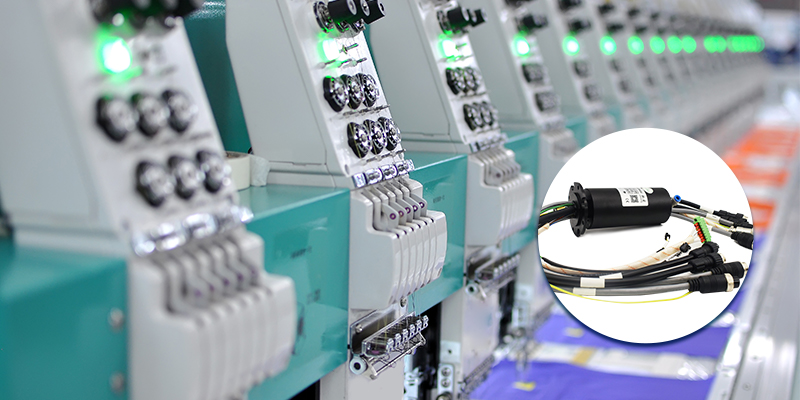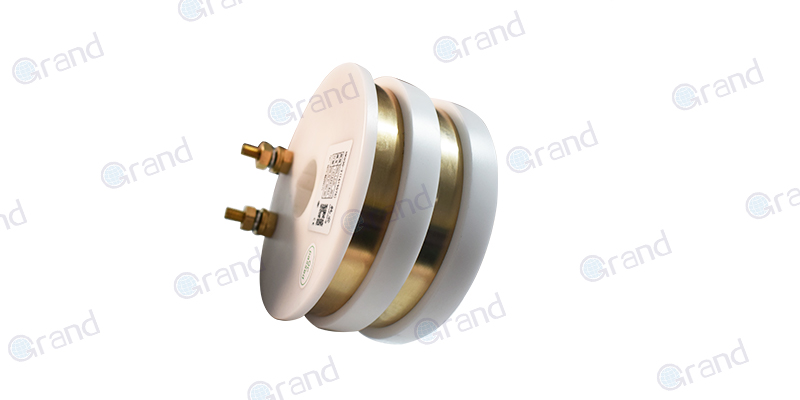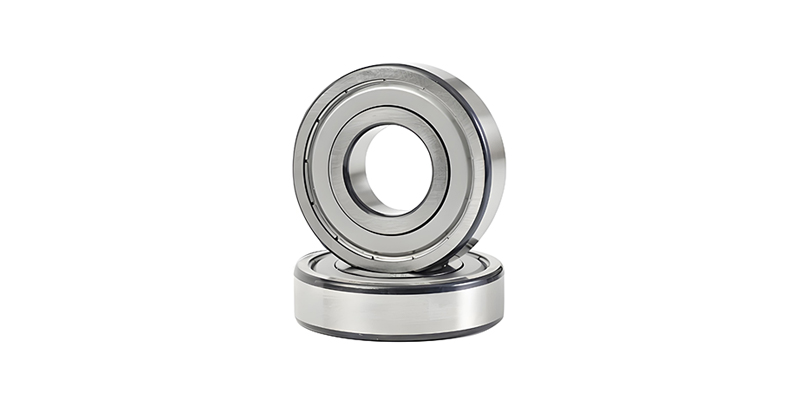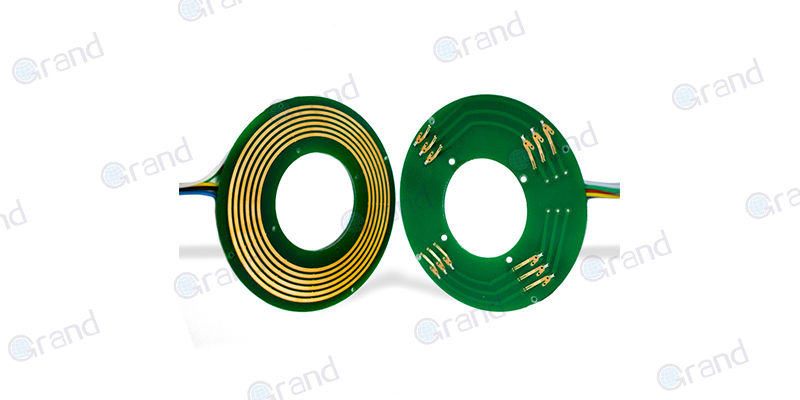Slip ring technology has revolutionized the field of medical imaging, particularly in computed tomography (CT) systems. As medical imaging continues to evolve, the role of slip rings in facilitating high-quality, efficient, and safe CT scans becomes increasingly vital. Slip rings are essential components that ensure seamless communication and power transfer between stationary and rotating parts of a CT scanner. The progression of slip ring technology from one generation to the next has greatly enhanced the capabilities of CT systems, improving diagnostic accuracy and patient care. In this article, we’ll explore the role of slip rings in CT, the different generations, and how each technological leap has improved the scanning process.
What is Slip Ring Technology in CT?
Slip ring technology is a mechanism that allows continuous rotation of the X-ray tube in a CT scanner while maintaining uninterrupted power and data transfer. In simpler terms, it enables the rotating components of the CT scanner, like the X-ray tube and detectors, to function continuously without needing to stop and reverse direction. This is crucial for producing high-quality, high-resolution images in a fraction of the time, improving both efficiency and accuracy.
Components of Slip Ring Technology:
Rotor: The rotor is the rotating part of the system, typically attached to the X-ray tube. It is the key to continuous movement during the scan.
Stator: The stator is the stationary component that is connected to the rest of the CT scanner’s electronic system, allowing for the transfer of power and data.
Brushes: These brushes make physical contact with the rotor, enabling the transfer of power and data. They allow the moving parts to stay connected to the stationary parts of the scanner, preventing any interruptions.
Role in CT Scanning:
The primary role of slip ring technology in CT is to allow for continuous and uninterrupted rotation during the scan. Without it, the CT system would have to pause and reverse direction after each rotation, which would slow down the scanning process. Slip rings eliminate this limitation, enabling faster scans with greater precision.

Generations of Slip Ring Technology in CT Scanners
Based on a typical ct scanner slip ring diagram, this electromechanical assembly facilitates the continuous 360° rotation of the gantry by transmitting electrical power (both high voltage for the X-ray tube and low voltage for detectors/systems) and bidirectional data signals (including high-speed raw detector data and control commands) between the stationary frame (stator) and the rotating frame (rotor) via conductive rings and sliding brush contacts (or fiber-optic channels), thereby eliminating cable wind-up limitations and enabling smooth, uninterrupted helical scanning.
Over the years, slip ring technology has evolved significantly, with each generation introducing new capabilities and improvements. These advances have drastically improved the speed, quality, and versatility of CT scanners. Let’s dive into each generation and understand how the technology has progressed:
First Generation – Basic Rotational Slip Rings:
Key Features: The first generation of CT scanners utilized basic slip ring technology, which allowed for the rotation of the X-ray tube around the patient. However, these early systems had limitations in terms of speed and resolution. The data transfer capabilities were not as advanced, and the resulting images were of lower quality.
Applications: These early systems were primarily used in basic diagnostic imaging where speed was less of a priority. They were used in hospitals and clinics that focused on simpler imaging needs.
Impact: While these systems were a breakthrough at the time, they were limited in their clinical applications due to slower scan times and lower resolution images.
Second Generation – Improved Data Transfer and Resolution:
Key Features: With the second generation of slip rings, the rotational speed of the X-ray tube was improved, allowing for quicker scans. Additionally, slip ring data transfer capabilities were enhanced, leading to better image resolution. These advancements meant that larger body areas could be scanned more quickly and with improved clarity.
Applications: This generation found its way into more advanced diagnostic settings, where faster and clearer imaging was needed for procedures such as scanning larger body parts.
Impact: The introduction of higher resolution and quicker scan speeds made these machines more effective for a wide range of diagnostic applications, although they still had limitations compared to later generations.
Third Generation – High-Speed Rotational Scanners:
Key Features: The third generation marked a major leap in CT scanning capabilities. These systems allowed for 360-degree continuous rotation of the X-ray tube, significantly cutting down scan times. Additionally, the image resolution reached new heights, providing much clearer and more detailed scans.
Applications: These CT scanners were widely adopted in clinical settings due to their faster scanning capabilities, which led to more efficient workflows and better diagnostic outcomes. This generation was especially beneficial for detailed imaging of smaller or complex anatomical areas.
Impact: The third generation became the standard in CT scanning, enabling clinicians to get faster and higher-quality images, making it the go-to option for a variety of diagnostic procedures.
Fourth Generation – Multi-Slice Scanners:
Key Features: The fourth generation brought a game-changing feature—multi-slice scanning. This innovation allowed the CT scanner to capture multiple slices (or cross-sectional images) simultaneously, further reducing scan times and improving image quality. Slip ring technology enabled this feature by facilitating the continuous transfer of data from multiple detectors.
Applications: Multi-slice CT scanners became the standard for more advanced imaging applications, such as cardiovascular imaging and oncology. They were capable of capturing high-resolution images of larger areas of the body with minimal patient movement.
Impact: Multi-slice CT revolutionized the field of medical imaging by allowing doctors to get highly detailed images of complex organs like the heart, lungs, and brain, all in a fraction of the time required by earlier scanners.
Fifth Generation – High-Performance CT with Dual Source Technology:
Key Features: The fifth generation of CT scanners incorporated dual-source technology, where two X-ray tubes and detectors were used in tandem. This enabled even faster scanning speeds and provided higher-quality images, especially in dynamic imaging procedures like cardiac imaging. Slip ring technology was crucial in supporting this dual-source system by ensuring seamless power transfer and data communication.
Applications: This generation of CT scanners is used for high-performance imaging, particularly in critical settings like emergency departments and research facilities. It’s particularly useful for high-speed imaging of the heart and other rapidly moving organs.
Impact: Dual-source CT scanners allowed for rapid and detailed imaging of moving organs, enabling doctors to make quicker and more accurate diagnoses, particularly in urgent care situations.

How Does Slip Ring Generation Impact CT Scanning?
Each generation of slip ring technology plays a pivotal role in how CT scanners perform. The evolution of this technology directly influences the key aspects of CT imaging: speed, quality, and safety.
Scan Speed: As slip ring technology advanced, so did the speed of CT scans. The introduction of faster rotations and multi-slice scanning allowed for scans that once took minutes to be completed in seconds, making it more efficient for both clinicians and patients.
Image Quality: With each generation, the resolution of CT scans has improved, allowing for clearer, more detailed images. This has enabled doctors to detect smaller abnormalities and make more accurate diagnoses.
Patient Safety: Faster scans also lead to a reduction in the amount of radiation a patient is exposed to, improving patient safety while still providing high-quality images.
Cost Efficiency: Advances in slip ring technology have led to more efficient scanners, which means hospitals and clinics can process more patients in less time, reducing overall operational costs.
Advantages of Slip Ring Technology in Modern CT Scanners
Slip ring technology in modern CT systems offers several significant advantages:
Continuous Rotation: Enables smoother, uninterrupted scans, resulting in faster imaging and enhanced patient comfort.
Increased Scan Speed: Faster scans reduce patient exposure to radiation and improve overall efficiency in medical settings.
Improved Image Quality: Higher resolution images lead to more accurate diagnoses and better patient outcomes.
Enhanced Versatility: Modern CT scanners with slip ring technology can accommodate a wide range of diagnostic needs, including advanced 3D imaging and dynamic studies of moving organs like the heart.

Challenges in Advancing Slip Ring Technology
Despite its remarkable progress, there are still some challenges that the medical imaging community faces when it comes to advancing slip ring technology:
Maintenance and Durability: The continuous movement of the slip ring components can cause wear and tear, leading to maintenance costs and potential downtime.
High Initial Cost: Newer generations of slip ring technology come with a hefty price tag, making it a challenge for smaller medical facilities to adopt the latest models.
Integration with Existing Systems: Integrating new slip ring technologies with older CT scanner models can be complex and costly, requiring significant upgrades to the entire system.
The Future of Slip Ring Technology in CT
The future of slip ring technology in CT scanners promises even more exciting developments. Advancements in materials science, nanotechnology, and machine learning are all set to play a role in enhancing the performance of slip rings. We may soon see CT scanners that are even faster, more efficient, and capable of producing higher-quality images with lower radiation doses.
AI Integration: Future slip rings may be integrated with artificial intelligence to enhance image analysis in real-time, offering doctors quicker insights during scans.
Wireless Power Transfer: In the long term, wireless power and data transfer could eliminate some of the wear-and-tear problems associated with traditional slip rings, improving their lifespan and reliability.
Slip ring technology has played a critical role in the advancement of CT scanners. Each new generation has significantly improved the speed, quality, and safety of scans, allowing for better patient care and more accurate diagnostics. As we look ahead, innovations in materials, AI, and wireless technologies will continue to push the limits of what slip ring technology can achieve in the realm of medical imaging. Keeping track of these developments will be crucial for both healthcare providers and engineers working to keep up with the demands of modern medicine.
See What We Can Do

